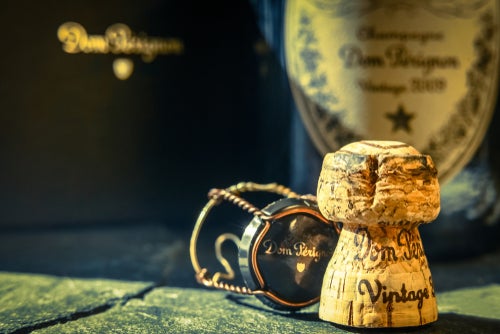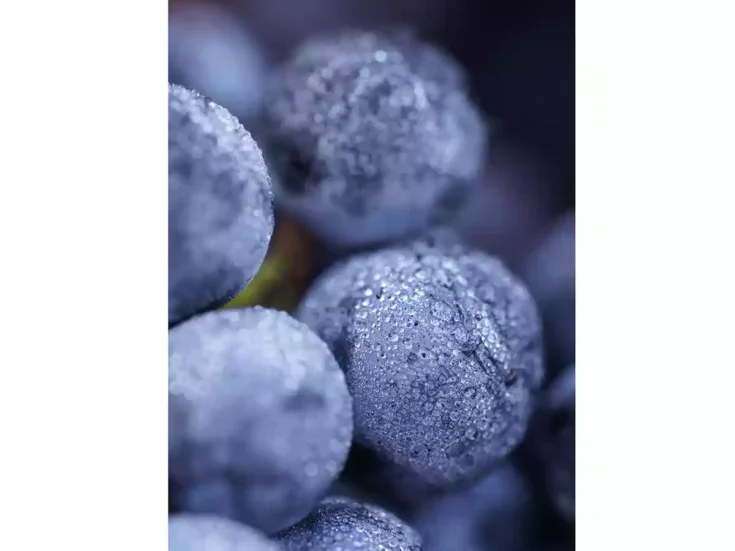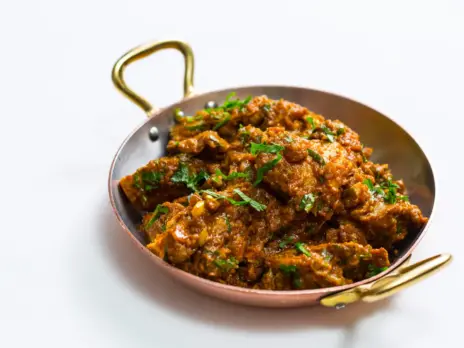
It is,” I said to my friend Clare, with whom I had a coffee after visiting Gutter & Stars, “about from here to that wall.” She burst out laughing; I was quite close to the wall.
“It” is Gutter & Stars’ urban winery, all 38 square yards (32 sq m) of it—though they should probably be octagonal yards. Yes, the winery is octagonal. It’s in the basement of a windmill; the ceiling is 6ft (2m) high, give or take a bit, and the walls slope gently inward. When it was a working mill, the basement, says Chris Wilson—who is winemaker, viticultural consultant, head of marketing and indeed everything else at Gutter & Stars—“it was basically a dampproof course for the rest of the mill. It was too damp down here to store documents, though a descendent of William French, who built it, says he used to store wine here in the 1980s.” There are four floors above this, but they’re let to somebody else; so, Wilson rattles around in this brick octagon with minimal plumbing, some daylight, and no heating or air-con whatever. It’s a rather wonderful place. And the wines have names like The Dark End of the Street or Love Steals Us from Loneliness. The names are taken from music or literature: A Handful of Dust is obvious, but most are aimed at, shall we say, a different demographic from me. Or at least different tastes in music.
Wine is a performance art, is it not? First-growth châteaux far prefer you to taste, by appointment, at their châteaux—where you can be flattered by the grandeur and the sense of occasion—than be handed an anonymous glass at a blind tasting in a dreary room where the wine might or might not outperform its neighbors. And if you can’t have the theater inherent in porticoes and turrets and rows and rows of immaculate barrels, the octagonal basement of a 19th-century windmill is not a bad alternative. It certainly beats the out-of-town industrial unit that was the alternative when Wilson decided to set up an urban winery.
A bijou winery in a windmill
Why did he, though? That’s another story. There he was, on the sports desk at the Daily Mirror, and he moved to lifestyle stuff—and that was what “flicked the switch of interest in wine,” he says. He did some WSET exams and then a three-year BSc at Plumpton; then he moved to Cambridge and had a family and wrote about wine. But he wanted to create something tangible. In 2018–19, he started to look for a site to make wine.
He looked at industrial units, but they are mostly on the far edges of cities, and he wanted to be inside. Cambridge is a small city where everybody cycles or walks; it’s flat, and windy. Which is why a windmill was built here in 1847. He looked at it, and in the lockdown of 2020 the landlord called him and said he was redeveloping the whole site and the windmill would be ready at the end of September: Take it now or never. “It was time to take a risk,” says Wilson.
It’s small, certainly, but it’s big enough for some barrels (all secondhand bar one), a couple of tiny steel tanks, a tiny egg-shaped plastic fermenter, and some bottles. There is a four-head bottling machine that fills 10–15 bottles per minute, so about 900 in a morning; a pump the size of a small terrier, for moving wine from barrel to barrel; and steps down through a door just wide enough to admit a barrel lengthways. They have to go in and go out empty, because of the weight.
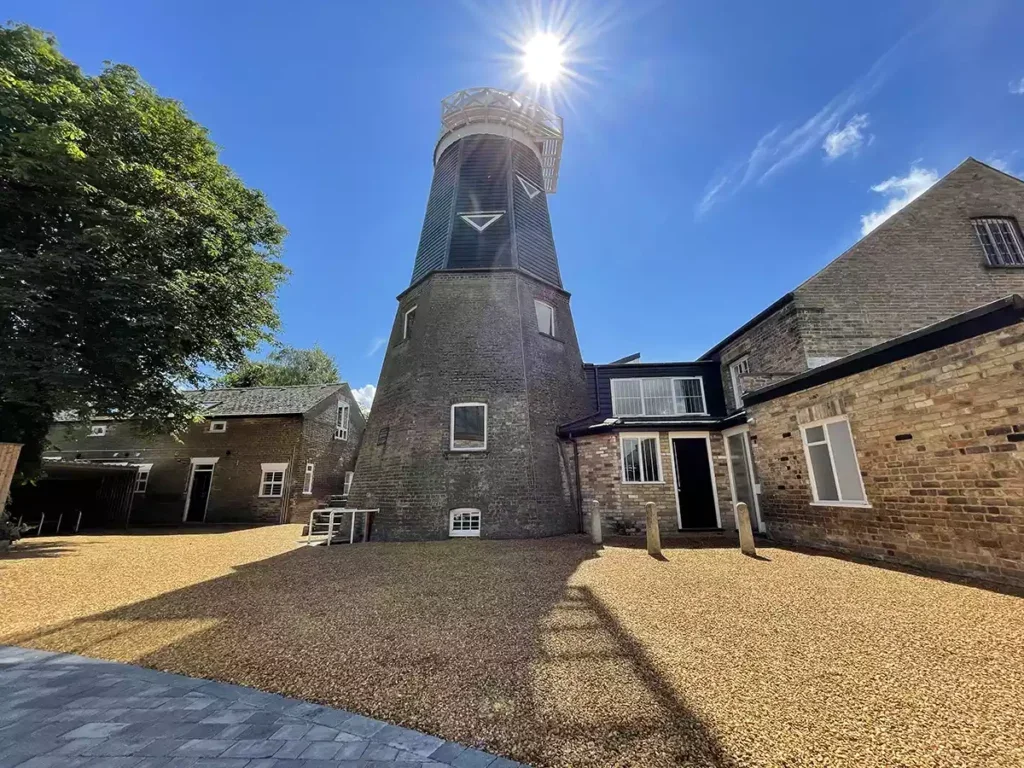
It’s bijou, and it brings people in. Wilson doesn’t offer regular tasting hours and doesn’t want to have a shop, but you can visit by appointment—and people do. But the first thing you need when you have a winery is grapes.
Wilson’s studies at Plumpton had provided contacts, and Duncan McNeill—who knows more about growing grapes in England, and especially eastern England, than most people—told him to talk to Missing Gate vineyard in Essex. It had its first crop but had no buyers yet. Missing Gate is in Essex’s Crouch Valley, a tiny region making a name for still wines; McNeill had advised on planting there. And that was Wilson’s first wine. He still buys their grapes.
More followed. At first Wilson went looking for grapes; now growers come to him. But he doesn’t want a purely transactional relationship. Growers can have their name on the label, and they work together on viticulture and picking, and Wilson supplies bins and collects the grapes, largely to avoid having growers show up at his (tiny) door at the wrong moment.
Ambition, honesty, and no showing off
His winemaking style is pretty classic: used barriques for fermentation, except for that brace of tiny steel tanks, the plastic egg, and an open-topped plastic fermenter; aging in oak. There’s nothing self-consciously experimental. Wilson will make a blend, sometimes of different vintages, if quantities aren’t big enough to fill a barrel; yeasts are usually cultured, often non-Saccharomyces, though enough yeasts have made themselves at home in the cellar by now to get fermentation going when he wants to go down that route. He doesn’t filter or fine, and he bottles by gravity. He prefers not to do lees-stirring for whites, because that character can be too strong.
So, what is he trying to express? What, as one wine merchant put it to me, is Wilson’s DNA? Most of the vines he is working with are young, so trying to express the vineyard would be optimistic; Wilson agrees that the vineyards are often too juvenile to have an opinion. And it’s not show-off winemaking. “I have a huge ambition to make good wine,” he says, and there’s an honesty about them. They’re precise and sensitively made, beautifully balanced, and with individuality. They’re subtle; give them attention and they repay it.
They’re all still—“sparkling is boring to make, and I haven’t got the space”—though he does make the odd col fondo, and quantities are small. One barrel’s worth is generally the smallest parcel of grapes he’ll buy, though he did do 130 bottles of one wine, the quantity tiny because of the year, and borrowed a half-barrel from Danbury Ridge to make it.
The business model works because everything is small-scale. Wilson doesn’t employ anybody and doesn’t use agents; 80% of his sales are direct to consumer, half local, half outside Cambridge. He has a wine club with 100 members who receive nine bottles a year and have various advantages. “Cambridge has a lot of people in the colleges and the technology companies who spend money on wine and eating out. They’re very happy to support a local enterprise, and they like experiences.” The wines generally sell out quickly, and he doesn’t age in bottle. The windmill is on a lease, not too expensive, and doesn’t need adaptations; “the kettle and the radio use the most power.” He’s funded everything himself, without investors (hence the name, he says), and for the first nine or ten months, until he had wine to sell, there was nothing coming in. But now it’s profitable—“it wipes its nose”—which is a lot more than you can say of many English producers, particularly at five years old. He keeps it on a tight rein: “Grapes are my biggest expenditure, and there are no cuts there. I pay what I need to.”
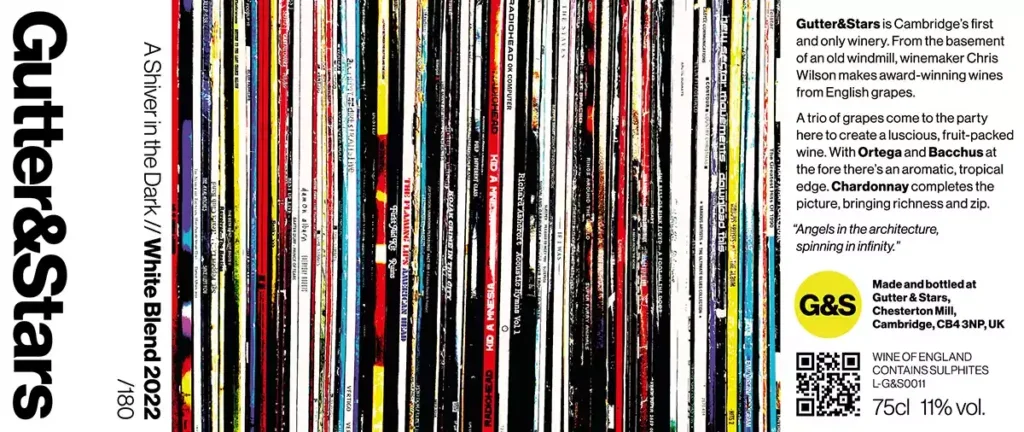
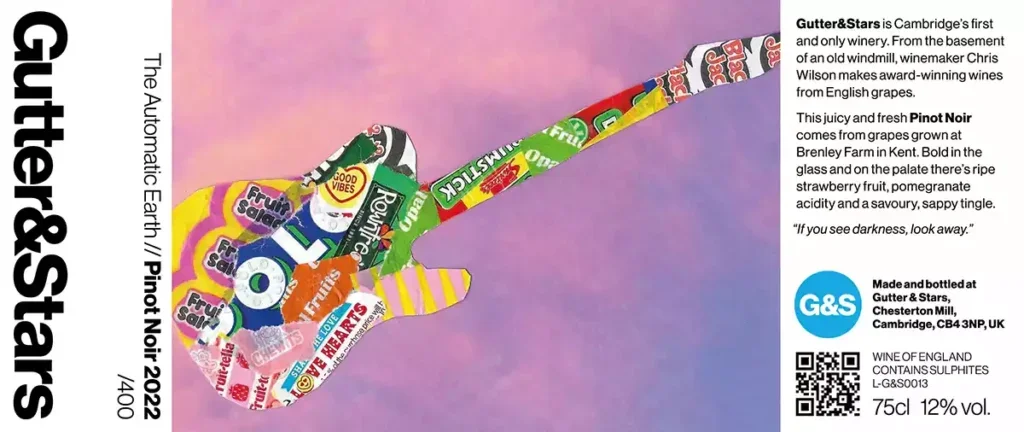


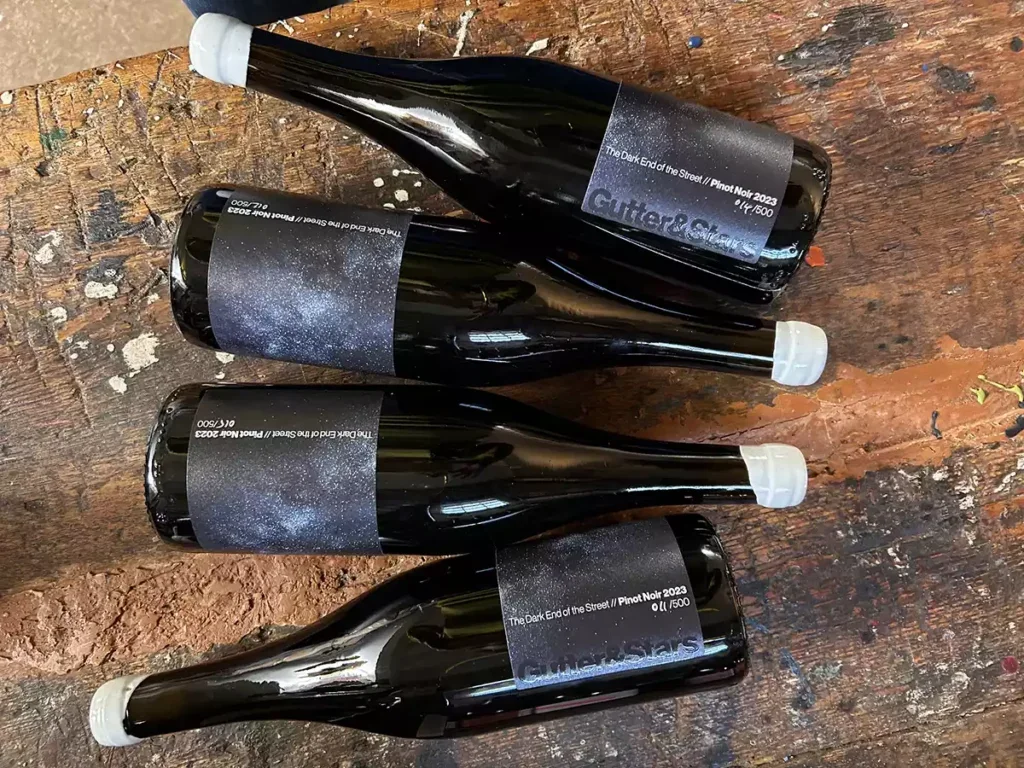
The allusive and creative labels inspired by literature (not only Oscar Wilde) and music.
If he expanded and made double, what would happen? He might well, he thinks, end up making only 5% more profit for a lot more than 5% more work. “I don’t want to make life more difficult for myself.” At the moment, he spends about three days a week on Gutter & Stars, and about two days a week writing about wine, averaged over the year. “I’m a writer,” he says. “I always want to write.” Though not, please note, about English wine. He also does some consulting for British wine importers. It’s a good balance, and it suits him. “I like being in the cellar, and visiting vineyards on a nice sunny day, but not worrying about the pruning.” Winter days in a muddy vineyard are not Wilson’s idea of fun, but winemaking very much is.
Finally, I should point to the very, very clever packaging of his wines. He came across a designer called Ed Wright, and they share the same tastes in music and design, and they’re the same age. The colors of the wax over the cork are bright, varied, and go with the labels. It’s part of the experience. Wine is a performance art, and this is a one-man show, albeit with a good backing group. Try it.

